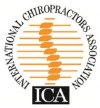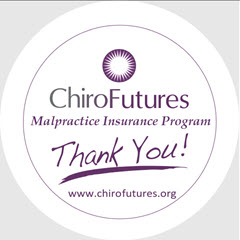ICA Requests Attendance at Meeting to Discuss CCE Crisis

In a letter from International Chiropractors Association (ICA) President Gary Walseman sent out to select individuals and now being circulated throughout the profession, the ICA is inviting select people and representatives of select groups to attend a “serious dialogue and planning conference" to be held in Atlanta, Georgia on Saturday, May 19, 2012 at the Marriott Renaissance Hotel at the Atlanta Airport.
Calling the meeting “an unprecedented gathering” Walseman states there will be like-minded individuals and organizations there to seek lasting solutions to the divisive and unsettling matters related to the Council on Chiropractic Education (CCE).
The letter states that the ICA believes that only profound changes in CCE’s policies, governance and Standards are acceptable as a solution and that the ICA is determined to pursue fundamental reforms at the CCE via every possible means.
Walseman makes it clear that the ICA is “not looking to eliminate the agency, but to make significant and lasting changes to restore its credibility and profession-wide acceptance.”
Walseman laid out the primary goal of the meeting as being agreement on the need for “profound and lasting reform at the CCE”.
While the history of accreditation within the chiropractic profession is long and tumultuous, the profession has been locked in an acute internal battle over the past couple of years centering around changes in the CCE Standards by which chiropractic programs are evaluated. Those changes included the removal of the descriptor “without drugs and surgery” from the Standards along with what is believed to be a sidelining of the profession’s clinical reason to be – the vertebral subluxation.
The changes in the Standards are tied to much larger and more serious fundamental issues that have plagued the profession since its inception but have taken on new meaning in an era of health care reform, declining third party reimbursement, declining market share and declining enrollment in chiropractic schools. This perfect storm has led to a significant faction of the profession seeking the inclusion of drugs into its clinical armamentarium and the systematic attacking of the conservative, traditional faction of the profession that wishes to retain the management of vertebral subluxation as its clinical focus.
The CCE was chastised at the end of last year by the National Advisory Committee on Institutional Quality and Integrity (NACIQI) of the United States Department of Education. The CCE was requesting continued recognition by NACIQI as the sole accreditation agency for chiropractic educational programs. NACIQI slapped the CCE with 42 violations of its recognition criteria and added a 43rd for good measure. It was the 43rd that drew the most attention. That recommendation was that the CCE demonstrate compliance with section 602.13 dealing with the wide acceptance of its standards, policies, procedures and decisions within the profession. Prior to the hearing a massive campaign was launched by the conservative, traditional faction of the chiropractic profession that resulted in over 4000 written complaints about the CCE to the United States Department of Education.
The CCE, instead of acknowledging that they had lost the confidence of the very profession it regulates, lobbied the Assistant Secretary of Education, Eduardo Ochoa and requested that he remove the language related to the infamous 43rd violation. Ochoa agreed and in his response to the CCE stated:
"I disagree with NACIQI’s concern about lack of wide acceptance of the agency’s standards in the field. The dissenting voices in my judgment are a small minority within the profession. Generally, I agree with the arguments presented by the agency in this regard. Accordingly, I am not requiring that CCE address 34 C.F.R. 602.13, or how the agency’s standards advance quality in chiropractic education, in its compliance report.”
This was not the first time that NACIQI voiced serious concerns about the CCE. In its last recognition hearing in 2006 NACIQI stated there was a virtual Cartel operating within the chiropractic profession and that this Cartel enjoyed a monopoly on the educational, licensing and regulatory aspects of the profession.
While the letter from Walseman calls for “profound” reforms at the CCE, the Foundation for Vertebral Subluxation (FVS) had this to say about the changes proposed by the ICA:
"We appreciate the time, effort and thoughtfulness that went into the development of the document including the laying out of the governance and related changes recommended in order to reform the Council on Chiropractic Education. While we consider the recommended changes to be a first step in any discussion regarding reformation of the educational system within chiropractic, we do not believe that the proposal goes nearly far enough to ensure that the conservative, traditional faction of chiropractic focused on a vitalistic approach to the management of vertebral subluxation will survive. We believe that far-reaching reforms are needed that fully embrace the historic and massive nature of the concern and controversy surrounding our profession’s educational system. We need profound reforms."
The Foundation for Vertebral Subluxation has called for more dramatic and far reaching reform of the educational system within chiropractic including what it terms the Curricular Freedom Model.
This reform model begins with substantial structural and personnel changes to be made within the CCE in order to create two autonomous accreditation Councils.
These Councils would enable curricular freedom for those who desire primary care status and those who wish to provide a conservative, traditional chiropractic education. This would require substantial changes in the bylaws, operating structure and the function of the CCE.
A list of organizations participating in the May 19th meeting has not been made public though a series of conference calls have been scheduled for those invited prior to the meeting to discuss the proposed agenda.
Breaking News
- The Chiropractic Cartel: A Look Back at Bias in Accreditation and its Imact on Today's Profession
- Making America Healthy Again: The Vital Role of Chiropractic
- Dump Part IV - Medical & Osteopathic Professions Have Dumped Theirs
- Chiropractic Organizations Challenge NBCE on Exam Policy Changes and Lack of Transparency
- Arizona Board Under Fire: Senator Janae Shamp Uses Legislative Reform to Stop Board's Abuse of Power














